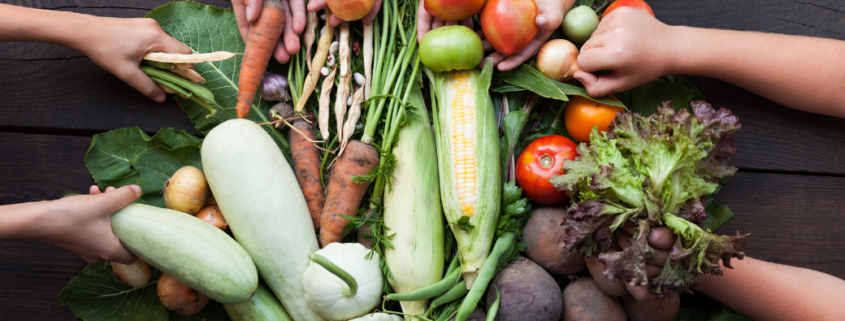Eat Beyond the Table in March and All Year Long
Written by Lori Bumbaco, MS, RDN, CSO, LDN, Oncology Dietitian
Eat Beyond the Table in March and All Year Long
All the food we eat affects not only our health, but also the environment. Did you know that many of the food choices that are beneficial for our health also happen to benefit the planet? Minimally processed foods such as fruits, vegetables, beans, whole grains, nuts and seeds are included on that list. One important step towards eating with the environment in mind is to think about how our food is produced. We live in an area where we have access to local farms and farmers’ markets that give us a chance to speak with the people who are growing our food. Many farmers are happy to answer questions, let us sample products, and even provide recipes or suggestions to help them taste delicious! Some local farms even offer tours or opportunities to volunteer to gain an even better understanding of how they operate.
Buy Local
Many local farms also offer farm shares through community supported agriculture. Sometimes additional products, such as eggs, can be offered. Locally, many farmers have shares available all year round. If you are interested to learn more, the U.S.D.A. has a searchable tool to find a farm near you. Alternatively, Prairie Wind Family Farm uses Cancer Wellness Center as a drop off point for their C.S.A. farm share.
Supporting a local farm by purchasing locally grown and seasonal foods helps us to eat with the environment in mind. We can also reduce food waste at home in several different ways. Eating a plant-based diet, which means that most meals and snacks have a lot of plant foods, can help the environment as well.
Have you ever tried to grow your own fruits and vegetables? If you have limited outdoor space, herbs and lettuce can be grown indoors. Tomatoes, peppers, and strawberries also can be grown indoors if you have ample sunlight. Schools, churches, and other organizations often have community gardens where you can volunteer in the growing process and share in the harvest.
Waste Less
It is estimated that Americans throw away billions of pounds of food each year either at home or when dining out. That number doesn’t include the amount that is uneaten at the grocery store or leftover crops at the farm. Not all food that is wasted can be consumed, but most of the food waste at home could be prevented. There are many ways to reduce food waste at home, starting with meal planning based on what food you have on hand. Take an inventory of what is available or soon to be expired at home. You can build meals and your grocery list around these key ingredients. Purchase only the amount of perishable items that can be consumed or frozen within a few days.
Make Smart Swaps
Some foods, like meat, have a bigger environmental impact than others. We can support the health of our environment by choosing more plant foods regularly. Replacing some or all of the animal foods we eat with beans, lentils, soy foods, nuts, seeds, and whole grains support our health and the environment. Each of those foods provide plant-based protein along with other nutrients not contained in animal sources. Fiber and phytochemicals are greater in plant-based protein choices than animal ones. One helpful website is Meatless Mondays, which encourages us to try to eat one meatless meal per week. There are plenty of recipes to choose from, helping you enjoy not only cancer fighting ingredients, but also eating with the environment in mind.



